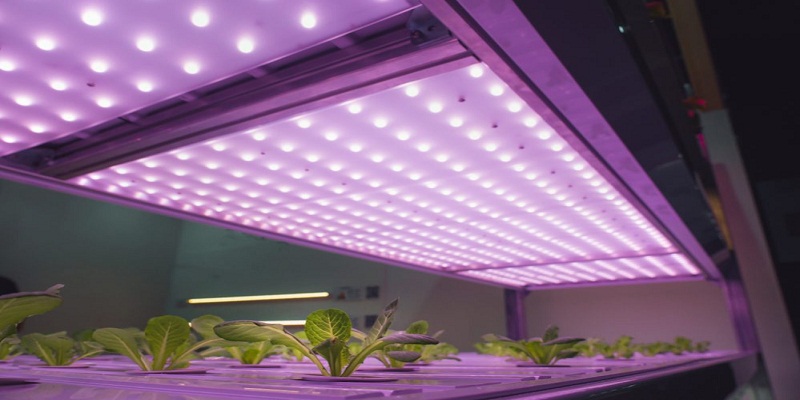LED lights are specifically used in places that do not have adequate natural light for supporting plant growth. They are also incorporated as a supplement for lighting in areas that have insufficient sunlight. This is usually done during winter when sunlight is insufficient in some places.
Uses of LED Grow Light Solutions
LED lights for growing crops are mostly used in horticultural farming. They are ideal for plant propagation, production of food crop and indoor farming. The most common basic scenario in which these lights are found is in the home made hydroponic systems that farmers use to grow plants in greenhouses without using soil. Although these lights are used commercially to grow crops, they are also used in domestic set ups. Special bulbs known as LED bulbs are used for the reason that they grow light which is disseminated in an electric form. They use wavelength and diodes to ensure adequate supply of lighting for plants especially during reproductive and vegetative phases of plant growth.
How to choose the best LED grow lights?
People are gradually engaging in the technique of using LED lights to grow plants. However, many people do not know how to choose the most ideal LED lights or providers of the best lights. It is important that you choose high quality and full spectrum led grow lights. It is also vital that you choose environmental friendly lights as well as lights that will be friendly to you and your plants. Additionally, choose lights that will enable you to save more energy. Also invest in cheap lights because you do not want to waste money by engaging in expensive farming techniques that will not yield adequate returns.
Read LED Grow Light Reviews
Before you purchase your LED lights for growing crops, it is crucial that you read reviews that other buyers or users have written and you can see unbiased reviews at TheReviewGurus. Regardless of whether you are a domestic or commercial farmer, there are different options that you can choose from in order to produce high amounts of quality food crops. However, finding the best grow lights is not only involving, but also tiring. Therefore, take time to read LED light reviews that others who are engaging in this farming technique have written about different grow lights. Find out what they say about them and what they recommend, so that you can make an elegant and sound decision.
Flowering
The stage of flowering in indoor farming is the most demanding with the light, and the quality of lighting directly influences the results in a resounding way. For flowering and with the power currently provided by the best LED grow lights is the power that must be at about 160/180W per m2 for good results. Below these figures work, but the results as you will understand are not the same.
The spectra as growing depends on the factory or the experience of the grower that manufactures its LED grow lights, in the multiple tracking of 120W, and the configuration of 4 colors gives some great results, possibly the best with LED grow lights. But in this, we are all profane, even the botanical experts hesitate a lot about the light and the plants and this gives LED grow lights farming the attraction of being a cultivator, experimenter, inventor or whatever you want.
Fresh Air
In a growing room that is clean, there is always adequate ventilation. More plants means more means higher significance of ventilation. Plants respire with leaves and they also get rid of the poison with them. If the ventilation of the room is not adequate, their leaves’ pores will be clogged eventually killing leaves.
Used air is hot, so it is best that you have an opening in the top of your room. The incoming new air must do it on the opposite side, creating a good circulation. The air intake should be double of the outlet, so the room will fill with fresh air very fast. Avoid lights at the air inlets and outlets because they could be clogged.
pH Control
The vast majority of the irrigation waters that we handle show a pH above the optimum, the amount of acid to be supplied depends mainly on the concentration of the bicarbonate ion present in the irrigation water, since this acts as a buffer against the pH changes in Irrigation water and at high concentrations require more acid for neutralization and pH adjustment.
To regulate the PH level of irrigation water, there are two well-known and commercial formulas called PH Down and PH Up, as the names indicate, one is a concentrated acid to lower the PH and the other concentrates on alkaline to raise the pH. There are homemade remedies to lower the PH, but they are unhygienic and can bring problems. You can click here for further information.






